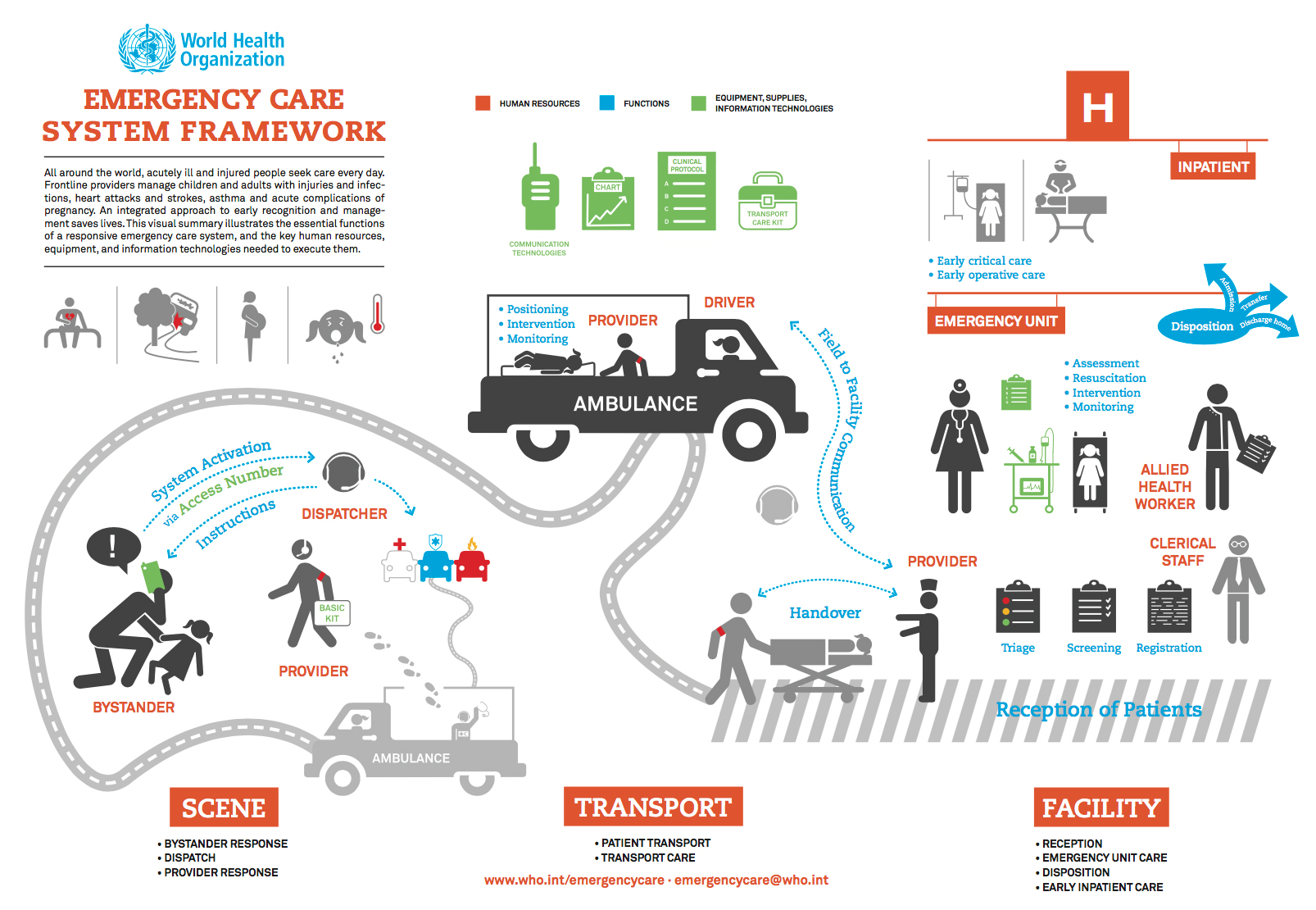In many places, emergency care access is limited, and frontline providers are overwhelmed and under-resourced. Deaths from injuries in low- and middle-income countries outstrip those from Malaria, HIV/AIDS and tuberculosis combined. An integrated approach that prioritizes early recognition and management of acute illnesses or serious injuries at every stage from the scene through care at the facility can save many lives.
This infographic shows the patient journey from injury or illness to receiving help and demonstrates essential components of the system that, when in place, can improve care at each stage. It shows the human resources, functions, and equipment or supplies that can make a critical difference in preventing death and disability.
The framework is designed to help policy makers evaluate and strengthen emergency care provision in their region. It provides a reference for policy makers and providers to assess system capacity, decide which planning and budgetary needs should take priority, and set up monitoring strategies to continuously improve their approach.
While the framework outlines the essential components of emergency care, how countries and policy makers execute these components can vary given differing regional considerations and available resources. The intention is to support policy makers as they develop their own action plans for systems development that will have a demonstrable impact on the quality of emergency care in their region.

